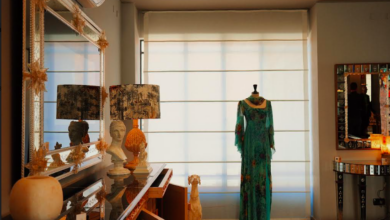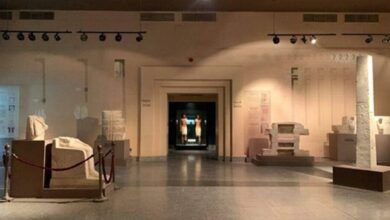
In the second part of our review of the Institut d’Egypte, Egypt Independent is focusing on the restoration of its building, which was swiftly undertaken by the Arab Contractors under the guidance of Egypt’s former military council. The restoration resulted in a lawsuit by the Supreme Council of Antiquities against the Arab Contractors, who accused the latter of damaging the architecture of a historically significant building.
Mohsen Ali, General Secretary of the Supreme Council of Antiquities, claimed that council members were invited to a meeting with the Arab Contractors after the building was burnt last December, and were ignored after voicing their opinion on the restoration process.
“The restoration process didn’t abide by world standards for restoring historic buildings, or even buildings with a unique architectural style,” says Mohsen, who pointed out that acrylic paints and concrete were used to restore the stone walls and wooden roof.
“You should not use materials other than the original ones,” says Soheir Hawas, Head of the Studies Administration at the National Organization for Urban Harmony. “This is a terrible violation of world restoration rules; what SCAF did was create a new building.”
But the chairman of the Institut d’Egypte, Abdel Rahman al-Sharnoby, objects to these criticisms.
“The ministry representatives attended the meetings with Arab Contractors and agreed on the process; then after 40 percent of the restoration was completed, they suddenly filed the lawsuit,” he claims.
Hanaa al-Nazeer, a professor of geography at Fayoum University and a regular visitor and volunteer at the institute, compares the institution before and after restoration. “The place is much better now. At least we have a clean and safe environment for books,” he says.
Nazeer used to participate in organizing monthly seminars at the institute and helped catalogue the French books for the Institute in the past. She mentions how in the past, the facilities lacked the necessary fire equipment and cameras to secure the books from theft in the past.
“It is a real achievement to have the place back in only six months,” she adds.
This isn’t the first time the building has been restored, says Sharnoby. It was damaged by the 1992 earthquake and was restored by the Cairo Governorate before it was listed as a monument in 1995.
Sharnoby claims that concrete was used during that restoration to save the wooden roof from falling, but Ali denies that, saying that the building was inspected and documented prior to the 1995 listing, and there was no mention of concrete in the structure.
Hawas supports Ali's claims, saying that the National Organization for Urban Harmony also documented the burnt building and there weren't any traces of concrete at that time.
“If there was concrete, it would have saved the building; but wood burnt rapidly and no one was able to save the books or the building,” Hawas says.
Even if concrete was used to support the corners of the roof, Hawas argues it still made sense to list it as a monument to protect it from further damage.
"The Culture Ministry might have listed the place regardless of the damage to protect it, as there wasn't any law for protecting valuable heritage buildings at the time," she explains.
What is important now is its current status, says Hawas. "If it has not been restored according to world standards, it should be excluded from the antiques list, and put on the list of buildings with heritage value to protect it."




